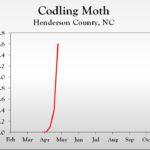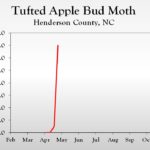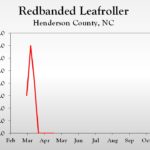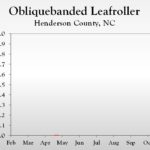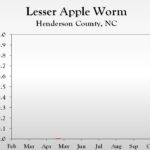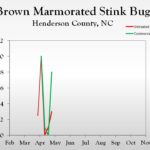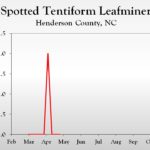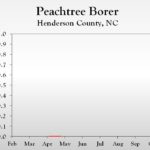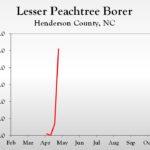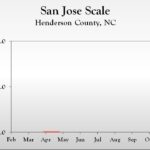WNC Orchard Insect Pest Populations – May 5, 2020
go.ncsu.edu/readext?686970
en Español / em Português
El inglés es el idioma de control de esta página. En la medida en que haya algún conflicto entre la traducción al inglés y la traducción, el inglés prevalece.
Al hacer clic en el enlace de traducción se activa un servicio de traducción gratuito para convertir la página al español. Al igual que con cualquier traducción por Internet, la conversión no es sensible al contexto y puede que no traduzca el texto en su significado original. NC State Extension no garantiza la exactitud del texto traducido. Por favor, tenga en cuenta que algunas aplicaciones y/o servicios pueden no funcionar como se espera cuando se traducen.
Português
Inglês é o idioma de controle desta página. Na medida que haja algum conflito entre o texto original em Inglês e a tradução, o Inglês prevalece.
Ao clicar no link de tradução, um serviço gratuito de tradução será ativado para converter a página para o Português. Como em qualquer tradução pela internet, a conversão não é sensivel ao contexto e pode não ocorrer a tradução para o significado orginal. O serviço de Extensão da Carolina do Norte (NC State Extension) não garante a exatidão do texto traduzido. Por favor, observe que algumas funções ou serviços podem não funcionar como esperado após a tradução.
English
English is the controlling language of this page. To the extent there is any conflict between the English text and the translation, English controls.
Clicking on the translation link activates a free translation service to convert the page to Spanish. As with any Internet translation, the conversion is not context-sensitive and may not translate the text to its original meaning. NC State Extension does not guarantee the accuracy of the translated text. Please note that some applications and/or services may not function as expected when translated.
Collapse ▲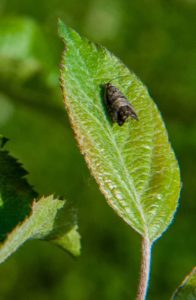 Cooler Temperatures Expected to Suppress Codling Moth Activity
Cooler Temperatures Expected to Suppress Codling Moth Activity
With the warmer temperatures during the past week, there was an increase in codling moth trap captures compared to recent weeks. However, with cooler temperatures moving into the region in the next couple of days, and expected to stick around for a week, insect activity will likely be greatly reduced. Codling moth degree day (DD) accumulations across the region range from about 100 at the Research Station in Henderson County to almost 350 in Lincoln County. The initial insecticide application for first-generation codling moth is recommended at 250 DD, which is not expected for at least 10 to 14 days in Henderson County. Off the mountain in Lincoln County, most locations have probably applied at least one application for first-generation codling moth. Further applications, if warranted, can likely be delayed during this cold period.
Time is Approaching for San Jose Scale Crawler Emergence
For those growers concerned about San Jose scale and who have not yet applied an insecticide for this pest, the optimum timing for targeting crawlers is mid-May in Henderson County (see graph below), and about a week earlier off the mountain in the piedmont. In lower elevations now is a good time to target crawlers, while in Henderson County a week or two from now would be optimal. Three insecticides, including Esteem, Courier and Movento, have all demonstrated excellent season-long control when applied to coincide with crawler emergence.
Learn more about southeastern apple insect pests at the Apple Insect Management page.
2020 Average Weekly Trap Captures
| HENDERSON COUNTY | |||
| Insects per trap | |||
| Apr 20 | Apr 27 | May 4 | |
| Codling moth | 0.1 | 0.4 | 1.6 |
| Oriental fruit moth | 0.1 | 0.8 | 1.5 |
| Tufted apple bud moth | 0.0 | 1.0 | 14.0 |
| Redbanded leafroller | 0.0 | 0.0 | – |
| Obliquebanded leafroller | set | 0.0 | 0.0 |
| Lesser appleworm | set | 0.0 | 0.0 |
| Apple maggot (abandoned and research orchards) | – | – | – |
| Brown marmorated stink bug (commercial) | 0.1 | 0.0 | 0.8 |
| Brown marmorated stink bug (unsprayed) | 0.1 | 0.1 | 0.3 |
| Spotted tentiform leafminer | 0.0 | 0.0 | 0.0 |
| Dogwood borer | – | set | 0.0 |
| Peachtree borer | 0.0 | 0.0 | 0.0 |
| Lesser peachtree borer | 0.0 | 7.0 | 51.0 |
| San Jose scale | 0.0 | 0.0 | 0.0 |
*Note that these averages illustrate only the timing of insect emergence and fluctuations in populations, and are not representative of population levels in any given orchard. The only way to have an accurate assessment of an individual orchard’s populations is to set up traps in that orchard.
2020 Accumulated Degree Days
| HENDERSON COUNTY | ||||
| Apr 20 | Apr 27 | May 4 | ||
| Codling moth (Biofix 4/20) | Biofix | 34 DD | 90 DD | |
| Oriental fruit moth (Biofix 3/30) | 185 DD | 250 DD | 332 DD | |
| Tufted apple bud moth (Biofix 4/27) | – | Biofix | 74 DD | |
2020 Pest Trends (click to enlarge)
Visit WNC Orchard Insect Populations for archived posts.



